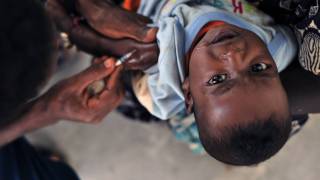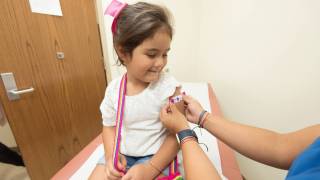5 States Confirm Mumps Cases During 2019

With most of the media focused on the ongoing measles outbreaks around the world, another vaccine-preventable, infectious disease has reached 5 states during 2019.
As of February 6, 2019, the states of Georgia, North Dakota, Pennsylvania, Utah, and Wisconsin have reported mumps cases during 2019.
These state-based news reports have yet to be confirmed by the Centers for Disease Control and Prevention (CDC), who has not yet issued a mumps outbreak report for 2019.
During, 2018, the CDC did confirm 2,251 mumps cases in 47 states and the District of Columbia. Additionally, several colleges reported on-campus, mumps outbreaks.
The 2018 data was actually good news when compared to 2017 when over 6,000 mumps cases were confirmed by the CDC.
The current states reporting mumps cases during 2019 are as follows:
- Georgia: Nancy Nydam, Director of Communications for The Georgia Department of Public Health, wrote, “An outbreak of mumps has been reported at the facility and the investigation is ongoing.”
- Pennsylvania: Officials at Garrett-Ford Elementary in Drexel Hill, Delaware County, are warning parents after a student was diagnosed with mumps.
- North Dakota: The North Dakota Department of Health says 2 cases of mumps have been reported in Williams County. And, North Dakota Department of Health says there have 3 more cases of mumps recorded in Stark County.
- Utah: Parents of children attending Sunset Elementary School were sent a letter from the Southwest Utah Public Health Department, warning them after a student stayed home sick with the disease Jan. 15th, after exposing teachers and students for up to 3 days.
- Wisconsin: A Marquette University student has contracted mumps. In an email to students, the school said the infected student lives in one of the residence halls.
A major factor contributing to mumps outbreaks is being in a crowded environment, such as attending the same class, playing on the same sports team, or living in a dormitory with a person who is infectious with mumps, says the CDC.
Also, certain behaviors that result in exchanging salivae, such as kissing or sharing utensils, cups, lip balm or cigarettes, might increase the spread of the virus.
The MMR vaccine prevents most, but not all, cases of mumps and complications caused by the disease.
The mumps component of the MMR vaccine has reported being 88 percent effective when a person gets 2 vaccine doses.
According to another study, one potential cause of these mumps outbreaks is ‘waning-immunization.’
A previous study from the Harvard T.H. Chan School of Public Health found that vaccine-derived immune protection against mumps persists an average for about 27 years, after the last administered dose.
In response to the expanding number of mumps outbreaks, the CDC released guidance in October 2017, regarding when a 3rd dose of mumps vaccine is appropriate.
This new CDC guidance did not recommend a 3rd MMR dose outside of a ‘confirmed mumps outbreak’.
Another reason for mumps outbreaks could be under-vaccinations by international travelers.
The CDC says international travelers who cannot show that they were vaccinated or are otherwise protected against mumps, should get vaccinated before leaving the USA.
In the USA, most pharmacies offer MMR vaccination services.
Children under the age of 12 years old may also get MMR vaccine, which protects against measles, mumps, rubella, and varicella (chickenpox).
To schedule an appointment with a pharmacist visit this site.
The CDC Vaccine Price List provides private sector vaccine prices for general information.
Vaccine discounts can be found here.
Vaccines, like any medicine, can have side effects, says the CDC. You are encouraged to report negative side effects of vaccines to the FDA or CDC.
Our Trust Standards: Medical Advisory Committee

























